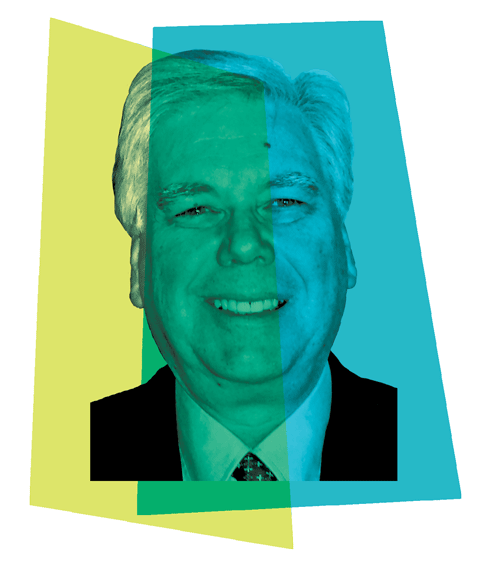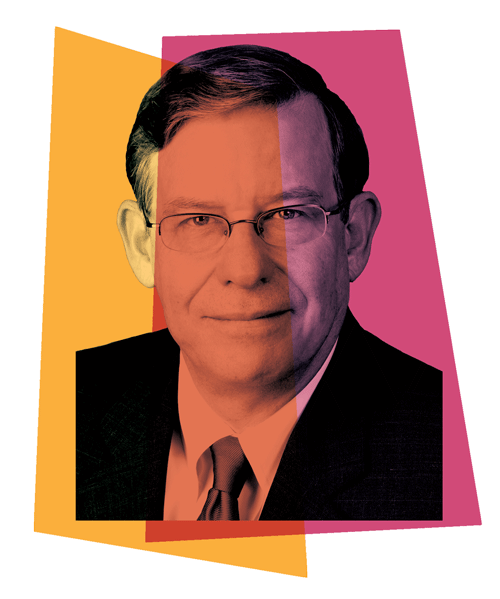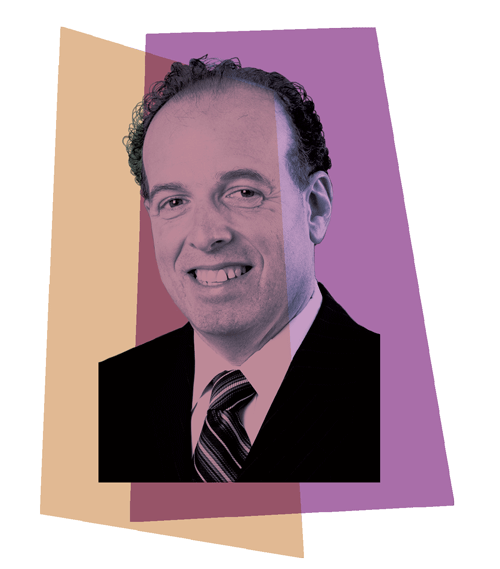
In business, strategy is everything. Driven by the organization’s singular purpose and desired objectives, it is the means by which the company will be successful. But fail to identify or appreciate a hidden threat and the business will suffer, leading to botched mergers and acquisitions, products that never attract buyers, or rushed decisions to enter a new market.
Unlike operational, financial and hazard risks, however, strategic risks are extremely difficult to evaluate, quantify and manage. An unexpected event can nullify the assumptions underlying the strategy and the broader the strategic horizon, the harder it is to manage these threats.
The chief culprits behind failed strategies are often big-picture financial, macroeconomic and geopolitical risks, as well as under-appreciated competitive threats. When not given their due consideration, these best-laid plans can devolve into uncomfortable explanations and apologies, or even put the organization’s very survival at stake. “Decades-old businesses can quickly disappear from a complete loss of confidence, their reputation in tatters,” said Robert Ployhart, Bank of America professor of business administration at the University of South Carolina.
How do organizations alter this potentially dire course? One solution is risk management. By tapping into the expertise of sophisticated risk managers during the early phases of strategic planning, senior executive leaders will have greater confidence bringing these plans to fruition. “By entrusting someone with anticipating, identifying, monitoring and tracking the key threats, a long-term strategy has a higher chance of success,” Ployhart said. “Great ideas often have a way of clouding the downsides, with the person conceiving the idea unable to discern what can possibly go wrong. Someone needs to offer a balanced perspective.”
Here, four risk managers provide their perspective. They come from diverse industries—a motorcycle manufacturer, a beer brewer and distributor, a furniture retailer and an institution of higher learning. Each plays an important role in developing strategy for their organizations, and their experiences demonstrate how risk management and strategy can go hand in hand in any industry.
Risk Assessment at Harley-Davidson

When Rob Gould joined the iconic American motorcycle manufacturer Harley-Davidson in 2003, the company lacked an enterprise risk management (ERM) structure. By 2010, Gould had helped to change that by implementing an ERM program that focused on identifying and managing strategic risk. “As senior executives create plans for the future, they can really benefit from a structured approach to evaluating the risk implications and looking through the windshield at what lies ahead,” Gould said.
Gould, the company’s director of internal audit, is responsible for facilitating its strategic risk management program. In addition to traditional tasks like evaluating internal controls and audit testing, his strategic risk management team identifies the key strategic risks facing the company, which are then managed and monitored by specific business leaders.
Gould believes that companies succeed by taking what he calls “opportunistic risks,” as long as these threats are clearly understood, monitored and managed. “Strategic risk management is just another tool to increase the confidence in taking on a particular risk to achieve the intent of strategic plans,” he said. “If you look at the number of well-known companies that failed in recent years, one can make the argument that they didn’t fully think through what could possibly go wrong.”
As part of their risk assessment process, Gould and his staff have identified 16 strategic risks for Harley-Davidson. For example, one such risk is brand equity. The Harley-Davidson name and the image of its heavyweight touring motorcycles inspire an emotional response in consumers that is a key part of the company’s brand identity. When, as part of efforts to increase its global market share, Harley-Davidson decided to introduce two lightweight models—the Street 500 and Street 700—designed to accommodate local licensing restrictions in regions with predominantly narrow roads, company leaders were able to use the insights from the strategic risk management process to examine the impact on the brand, identify and assess any strategic risks and manage those risks going forward.
The ERM program also facilitated contingency planning exercises in advance of the implementation of a new enterprise resource planning system. Gould provided input at the board level in assessing the related project management risks, such as implementation readiness, cost and timing. “This was a truly major project supporting critical business processes,” he said. “We worked with the business to facilitate assessments of what could go wrong and developed contingency plans were these scenarios to occur. Above all, the ERM process provided a context for identifying and assessing the implications, risk mapping them and putting them in a dashboard for ongoing monitoring.”
For Gould, this interaction is an important benefit of the ERM process. “Part of the intent of ERM is to articulate the nature and the impact of strategic risks, and then provide input for leadership to manage them as they evolve,” he said.
Strategic Collaboration at Molson Coors

Nine years ago, Raphael Castillo debuted a global ERM program at the world’s seventh largest brewer by volume, Molson Coors Brewing Company, which was formed in 2005 by the merger of Molson of Canada and Coors of the United States. Castillo began his career as a risk manager at Coors in 1987 and now leads the company’s ERM program.
As the brewer expands its global footprint, Castillo’s program has been crucial to strategic decision-making. “Through the ERM process, we have become a constant partner with our people in strategy,” Castillo said. “At the corporate level, the strategy group produces short-term, medium-term and long-term plans, then we take those plans and think through the risk implications—the obstacles thwarting these goals and how to mitigate and manage them.”
Castillo provided two examples of this strategic collaboration, each focused on potential challenges to market expansion and future sales: taxation and international regulation. In many ways, these challenges are intertwined.
The manufacture, distribution and sale of alcohol is highly regulated across the world, and the regulations differ not only country to country, but also across many U.S. states. Since these regulations often change, Castillo and his staff must get in front of such shifts since they can have an impact on the company’s revenue and profits. Reasons for the changes run the gamut. “One place may decide that beer should be taxed more because of the health consequences; another place may decide to increase excise taxes based on an emerging anti-alcohol movement,” he explained.
Recently, there was a movement in the United Kingdom to place a government-imposed minimum sales price on beer, in the belief that this would reduce alcohol-related traffic accidents and fatalities. Castillo believes the perceived correlation between higher pricing and human behavior was misplaced, however. “In Canada, which imposed a minimum price, they learned that people buy other alcoholic beverages like wines and spirits when the price of beer goes up too much or the price parity between the beverages narrows,” he said.
Castillo regularly advises Molson Coors’ decision-makers and lobbyists on these potential changes in global and national regulatory and tax postures. “Rather than be the keeper of a list of risks we have identified and are managing, we share these insights as part of a team effort,” he said. “We get involved in the risk analysis, defining the elements driving the risk and their potential impacts on our business. We’re also involved in the solutions to these challenges, which are different given that each jurisdiction is different. Fortunately, all we do is make and sell beer. But, like every company, our biggest risks are strategic.”
Variable Analysis at Havertys

Like many business executives, Jim Presmanes, vice president of risk management and insurance at Haverty Furniture Companies, was taken aback by the ferocity of the financial crisis and the recession that followed. For the retail furniture industry, where purchases are often driven by disposable income, the sales impact was significant.
Having weathered the hit better than most retailers, Havertys, a publicly traded, Atlanta-based retail furniture company with 122 stores in 16 states, sought a more sophisticated means of identifying economic risks to its strategic plans. Presmanes, who had engineered Havertys’ ERM implementation in 2008, took on the task.
“The Great Recession taught everybody a lesson about the importance of tracking the economy,” Presmanes said. “The challenge is that it is easy to get lost in the morass of anecdotal and often conflicting economic reports that fill daily newspapers and television news broadcasts and clutter the internet.”
Presmanes wanted to develop a more reliable, mathematical system to help assess the company’s relationship with a changing economy. He analyzed more than 30 economic variables, using simple rate of change linear regressions on unemployment, new homes sales, household wealth and so on, to understand how these variables correlated with the company’s historical business. The goal was to discern which variables had the greatest effect. One of the more important variables discovered was annual percentage change in real GDP.
Senior company leaders can use Presmanes’ statistical model when making strategic decisions, such as where to locate a new store and how to put together a more accurate budget. “By modeling the relationship of the different variables to our business, we’re able to rigorously establish and define the context of our business for strategic decisions and risk-planning,” he said.
Presmanes regularly reassesses the accuracy of the models to ensure they still provide this value, noting that the models are not written in stone. “The economy is constantly changing,” he said. “We’re always looking to refresh the models, measuring different variables against our internal data to reduce uncertainty.”
Project Management at NYU

One of the world’s preeminent educational institutions, New York University is geographically much more than just its Manhattan campus. The NYU of today is an assortment of more than half a dozen corporations, as well as an undergraduate school, business school, law school, art school and various graduate schools. This extends to 13 wholly owned international brick-and-mortar campuses in locations such as Sydney, Shanghai, Abu Dhabi and Florence.
Tasked with managing the many risks confronting this wide-ranging enterprise is Michael Liebowitz, senior director of insurance and enterprise risk management.
Five years ago, Liebowitz built an ERM framework at NYU based on ISO 31000. In the years since, he has rolled it out across the university’s global expanse, a process that continues. “My job is to ensure that ERM is aligned with the organization’s strategic goals, looking out at the horizon where senior leaders are looking to anticipate the risks they may not see,” he said. “Once we see them in the distance, we try to mitigate them before they arrive. This is the essence of strategic risk management.”
Liebowitz is currently applying these principles to assisting NYU’s new Program Service Office, which provides project management, change management, business process improvement and information analytics services to the university. The office is engaged in developing a travel management software tool for students, faculty and staff, in part because of the global spread of the institution and its strategic goal of encouraging cross-cultural collaboration.
Last year, Liebowitz was asked to distinguish, assess and categorize the travel tool’s project management risks. “We were tasked to identify exposures that could prevent the project from meeting its end goals,” he said. “We were also entrusted to identify other exposure points, such as compliance risks.” In this work, he is using ERM tools like risk mapping and risk scoring.
Liebowitz has been a risk manager long enough to experience the discipline’s transformation from a backwards-looking activity to one that scans the horizon for strategic risks. “Our responsibility is to look ahead at what can go wrong down the line and do something to stop it from happening,” he said. “The past is past; what’s important is the future.”
